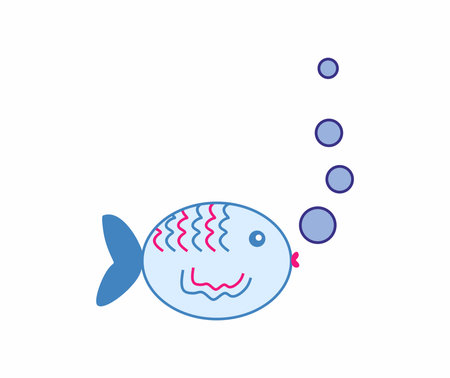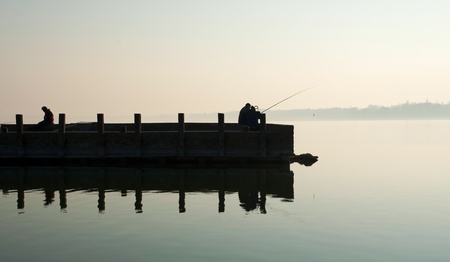Introduction to UK Fisheries and Angling
The United Kingdom boasts a rich heritage of recreational angling, with rivers, lakes, and coastal waters providing a diverse range of opportunities for anglers across the nation. Angling is not merely a leisure activity; it is deeply woven into the cultural fabric of British life, from traditional countryside pursuits to vibrant urban fishing communities. The economic significance of fisheries and angling cannot be understated—contributing billions annually to the UK economy through tourism, equipment sales, licensing, and local businesses. Beyond monetary value, angling plays a crucial role in promoting mental well-being, encouraging outdoor engagement, and fostering environmental stewardship among participants of all ages. These factors underline the importance of ensuring the long-term sustainability of fisheries resources—a challenge that necessitates effective collaboration between government agencies and local angling clubs. This partnership is vital for safeguarding the future of British fisheries while preserving the cherished traditions and substantial benefits associated with recreational angling.
2. Roles of Government Agencies in Fisheries Management
Effective fisheries management in the UK hinges significantly on the involvement and coordination of key government agencies. Chief among these are the Environment Agency (EA) in England and Natural Resources Wales (NRW) in Wales, both of which play pivotal roles in overseeing, regulating, and sustaining the nation’s fisheries. These organisations are charged not only with safeguarding aquatic habitats and fish stocks but also with ensuring that angling remains a sustainable activity for future generations. Their work is rooted in a blend of scientific research, policy enforcement, public engagement, and collaboration with local angling clubs.
Key Functions of the Environment Agency and Natural Resources Wales
The EA and NRW operate under clear mandates to ensure that fisheries resources are managed responsibly. Their responsibilities include licensing, monitoring water quality, enforcing fishing regulations, habitat restoration, and supporting fish stocking programmes. They also have a crucial role in responding to environmental incidents such as pollution or disease outbreaks that could threaten fish populations.
Comparison of Agency Roles
| Agency | Region | Core Responsibilities |
|---|---|---|
| Environment Agency (EA) | England | Licensing anglers, setting catch limits, habitat protection, water quality monitoring, enforcement of byelaws |
| Natural Resources Wales (NRW) | Wales | Regulating fisheries access, habitat management, environmental monitoring, stakeholder engagement |
Regulatory Tools and Collaboration Mechanisms
Both agencies utilise a variety of regulatory tools such as rod licences, closed seasons, minimum landing sizes, and specific byelaws tailored to local conditions. Importantly, they consult widely with angling clubs during policy development to ensure that regulations are both practical and effective. Stakeholder forums and joint working groups facilitate ongoing dialogue between agencies and grassroots organisations.
The Importance of Science-Based Decision Making
A hallmark of UK fisheries governance is the use of scientific evidence to inform management decisions. The EA and NRW commission regular stock assessments, habitat surveys, and ecological impact studies. These data-driven approaches underpin sustainable stocking programmes and targeted conservation efforts. By sharing findings with angling clubs and incorporating local knowledge into their strategies, government agencies foster a collaborative environment where sustainability goals are more readily achieved.

3. Angling Clubs: Grassroots Stewards of the Waterways
Across the UK, local angling clubs serve as vital custodians of rivers, lakes, and canals—often acting as the first line of defence in safeguarding aquatic habitats. Their grassroots engagement is instrumental in ensuring long-term fisheries sustainability through a blend of practical action and community leadership. Angling clubs contribute extensively to habitat improvement by organising regular work parties for riverbank restoration, litter clearance, and invasive species management. These efforts not only maintain but often enhance biodiversity, directly supporting fish populations and other wildlife.
Species Monitoring and Data Collection
Local angling clubs are uniquely placed to provide real-time data on fish stocks and water quality. Members routinely log catches, report sightings of rare or non-native species, and note changes in water conditions. This monitoring complements scientific surveys led by agencies such as the Environment Agency or Natural Resources Wales. The data gathered by club members forms an essential evidence base, informing both immediate management decisions and long-term policy planning.
Community Engagement: Building a Culture of Conservation
Beyond direct conservation work, angling clubs play a pivotal role in fostering environmental awareness at the community level. Through youth programmes, educational workshops, and open days, they instil a sense of stewardship among new generations of anglers. Clubs also act as bridges between local residents and statutory bodies, facilitating dialogue on issues like pollution incidents or development threats. By nurturing a community invested in the health of their waterways, these clubs help embed sustainable practices within local culture.
The Strategic Value of Club-Led Initiatives
The expertise and passion found within angling clubs make them invaluable partners for government agencies seeking effective, locally tailored fisheries management solutions. Their practical experience on the ground ensures that strategies devised at a national level are workable at the grassroots. In this way, collaboration with angling clubs amplifies the impact of formal conservation policies, driving collective action towards healthier, more resilient UK fisheries for future generations.
4. Models of Collaboration: Case Studies
Effective collaboration between government agencies and angling clubs in the UK has become a cornerstone for achieving long-term fisheries sustainability. Over the past decade, various models of partnership have emerged, each offering unique approaches to safeguarding aquatic ecosystems while supporting local communities and recreational anglers. By examining these real-world examples, we can better understand the strategic advantages and technical frameworks that underpin successful co-management and conservation initiatives.
Co-Management Schemes: Sharing Responsibility
The Environment Agency (EA) has spearheaded several co-management projects with local angling clubs across England and Wales. Under these schemes, the EA provides scientific guidance, monitoring resources, and regulatory oversight, while angling clubs contribute local knowledge, volunteer effort, and day-to-day stewardship. This collaborative model ensures that management decisions are both evidence-based and rooted in the realities of each fishery.
Case Study: The River Wye Partnership
On the River Wye, a renowned game fishing destination, a formal partnership between Natural Resources Wales, the Angling Trust, and local angling associations has yielded significant ecological benefits. Joint actions include habitat restoration, invasive species control, and catch-and-release campaigns. Importantly, regular stakeholder meetings ensure transparent decision-making and adaptive management practices.
Key Collaborative Actions on the River Wye
| Agency/Club | Main Contribution | Outcome |
|---|---|---|
| Natural Resources Wales | Ecological surveys & funding | Improved water quality metrics |
| Angling Trust | Policy advocacy & education | Increased angler engagement |
| Local Angling Clubs | Volunteer riverbank work & reporting poaching | Reduced illegal fishing incidents |
Joint Conservation Projects: Targeted Interventions
An outstanding example of targeted collaboration is the South West Fisheries Partnership’s campaign to restore wild brown trout populations in Devon rivers. Here, government scientists work hand-in-hand with club members to implement spawning gravel replenishment and tree planting initiatives. The technical expertise provided by agencies is complemented by the grassroots effort of anglers who monitor juvenile fish numbers and maintain habitats year-round.
Tangible Benefits of Joint Projects
- Biodiversity gains through enhanced spawning grounds.
- Sustained angler access due to improved river health.
- Knowledge transfer between professionals and volunteers.
- Greater public awareness via community outreach events.
This blend of strategic oversight from public bodies and operational input from angling clubs exemplifies best practice for future collaborations across the UK’s diverse fisheries landscape.
5. Challenges and Opportunities in Joint Initiatives
Collaboration between government agencies and angling clubs brings both significant challenges and promising opportunities for the sustainable future of UK fisheries. Understanding these dynamics is crucial for shaping effective joint initiatives that are fit for purpose and resilient in the long term.
Funding Constraints and Resource Allocation
One of the most persistent obstacles is funding. Both government bodies and angling clubs often operate within strict budgetary limits, making it difficult to finance large-scale conservation projects or ongoing monitoring efforts. Securing grants can be competitive, while reliance on membership fees or public donations may not provide consistent support. This financial pressure can restrict the scope of collaborative actions, from habitat restoration to educational outreach.
Enforcement and Compliance Issues
Effective enforcement of fisheries regulations requires both manpower and local knowledge. While government agencies have statutory authority, they frequently lack the on-the-ground presence that angling clubs offer. Conversely, angling clubs may not always possess the legal clout needed to enforce national policies. This mismatch can hinder prompt responses to illegal fishing activities or non-compliance with catch-and-release guidelines, ultimately threatening sustainability goals.
Differing Priorities and Perspectives
A further complication arises from varying priorities. Government agencies tend to focus on broader ecological objectives, such as biodiversity preservation and water quality improvement. Angling clubs, meanwhile, are often motivated by access to healthy fish stocks and quality recreational experiences for their members. Aligning these interests requires open dialogue and compromise, which can sometimes be challenging amid differing expectations or historical mistrust.
Emerging Opportunities for Enhanced Cooperation
Despite these hurdles, there are growing opportunities for more effective collaboration. Advances in digital technology allow for improved data sharing on fish populations and water conditions, fostering evidence-based decision-making. Joint training programmes can empower both sides with skills in species identification, habitat management, and community engagement. Additionally, national campaigns—such as citizen science initiatives—can bridge gaps by involving local anglers directly in scientific monitoring.
Towards a Collaborative Future
The path forward lies in embracing a partnership model that values transparency, shared responsibility, and adaptive management. By capitalising on each other’s strengths—governmental oversight and local expertise—joint initiatives can drive tangible progress towards long-term fisheries sustainability in the UK.
6. Strategies for Enhancing Long-Term Sustainability
To secure the future of UK fisheries, a more robust and dynamic partnership between government agencies and angling clubs is essential. The following recommendations offer a roadmap for deepening collaboration, leveraging innovative technology, education programmes, and policy frameworks that reflect the unique characteristics of British waters and communities.
Embracing Innovative Technology
Integrating cutting-edge technology is crucial to monitor, manage, and enhance fisheries sustainability. Government agencies should work hand-in-hand with angling clubs to deploy real-time data collection tools such as environmental sensors, fish counters, and mobile apps tailored for British rivers and lakes. These technologies can provide accurate stock assessments and identify emerging threats like pollution or invasive species. By creating shared digital platforms, both sectors can ensure transparency in data sharing, facilitating rapid response and informed management decisions across regions—from the chalk streams of Hampshire to the lochs of Scotland.
Developing Education Programmes
Education remains a cornerstone of long-term sustainability. Government bodies should support angling clubs in developing targeted outreach initiatives—such as school workshops, community events, and online resources—that promote responsible fishing practices and raise awareness about local ecosystem challenges. Tailoring these programmes to reflect regional dialects, wildlife, and cultural traditions ensures stronger engagement. For instance, initiatives highlighting the history of coarse fishing in the Midlands or salmon conservation efforts in Wales can foster local pride and stewardship among both young anglers and seasoned enthusiasts.
Strengthening Policy Frameworks
Policy must keep pace with ecological realities and the evolving needs of the angling community. Collaborative forums should be established where club representatives participate directly in shaping regulations on catch limits, closed seasons, habitat restoration priorities, and licensing systems. Crucially, these frameworks should be flexible enough to adapt to distinct UK contexts—whether addressing overfishing pressures on urban canals or supporting rewilding projects in rural river valleys. Embedding local voices within national strategies builds trust and ensures that policies are workable on the ground.
Promoting Continuous Knowledge Exchange
Sustained dialogue between agencies and clubs is vital for exchanging best practice. Regular joint workshops, regional conferences, and digital knowledge hubs can help disseminate research findings, successful pilot projects, and traditional know-how. Encouraging cross-club visits—such as Yorkshire anglers learning from Cornish sea trout conservation schemes—cultivates a spirit of camaraderie and innovation across the UK’s diverse angling landscape.
A Call to Action
The path to sustainable fisheries hinges on forging deeper alliances rooted in mutual respect and practical action. By harnessing technology, investing in education, refining policy together, and fostering open communication, government agencies and angling clubs can safeguard Britain’s cherished waters for generations to come.
7. Conclusion: Securing the Future of UK Fisheries
The collaboration between government agencies and angling clubs stands as a cornerstone for ensuring the long-term sustainability of fisheries across the UK. By combining regulatory expertise, scientific research, local knowledge, and grassroots engagement, these partnerships have delivered tangible benefits both for fish stocks and the wider angling community. Joint initiatives—such as habitat restoration, catch data monitoring, and educational outreach—have not only enhanced the resilience of aquatic ecosystems but also strengthened compliance with conservation measures.
Looking ahead, robust and enduring cooperation remains critical. As environmental pressures from climate change, pollution, and increased recreational demand intensify, adaptive management strategies will require even closer integration of resources and knowledge sharing. The continued involvement of angling clubs in policy development ensures that regulations remain practical and locally relevant, while government backing provides the necessary authority and funding to implement large-scale projects.
For sustainable angling in the UK to thrive, stakeholders must prioritise transparent communication, foster mutual trust, and embrace innovation—whether through digital catch reporting tools or novel habitat enhancement techniques. By nurturing these partnerships for the long haul, we can secure a vibrant future for both fisheries and those who cherish them on Britain’s waters.

